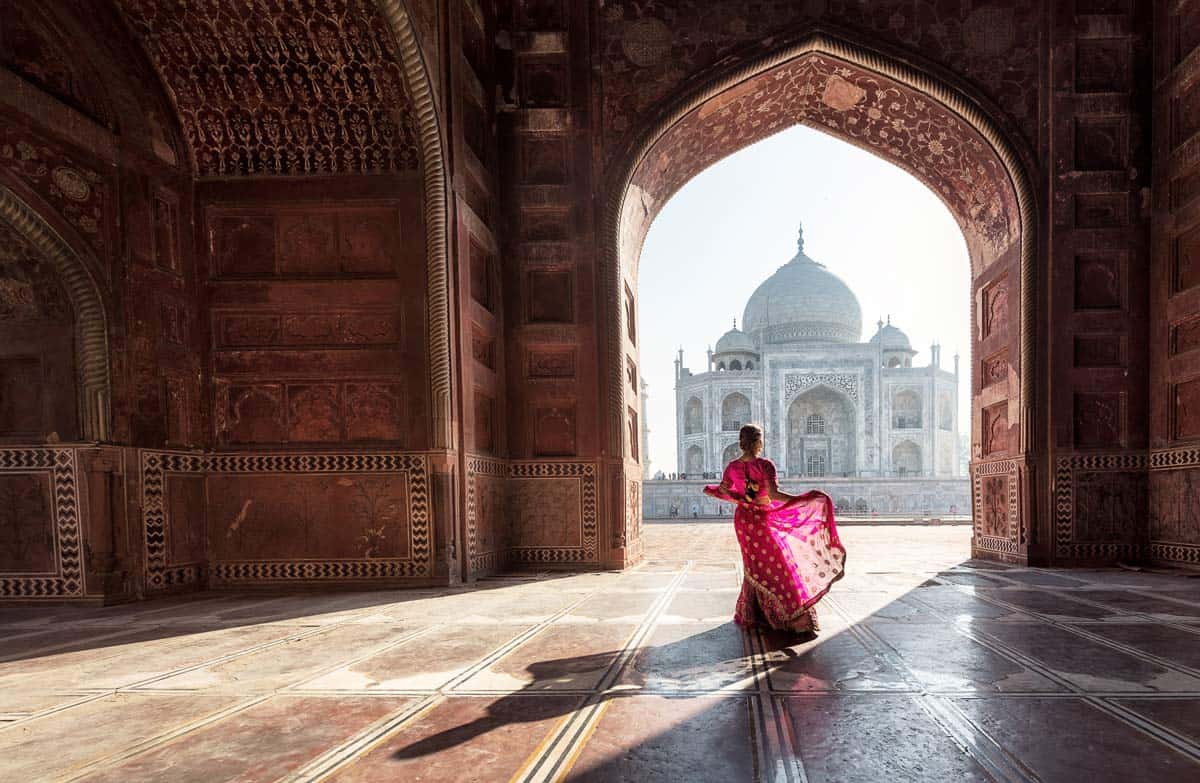
Editor’s Note: We’re all dreaming of travel ahead. Here’s some inspiration for future adventures. We share places, products and activities we recommend. If you make a purchase using a link on our site, we may earn a commission.
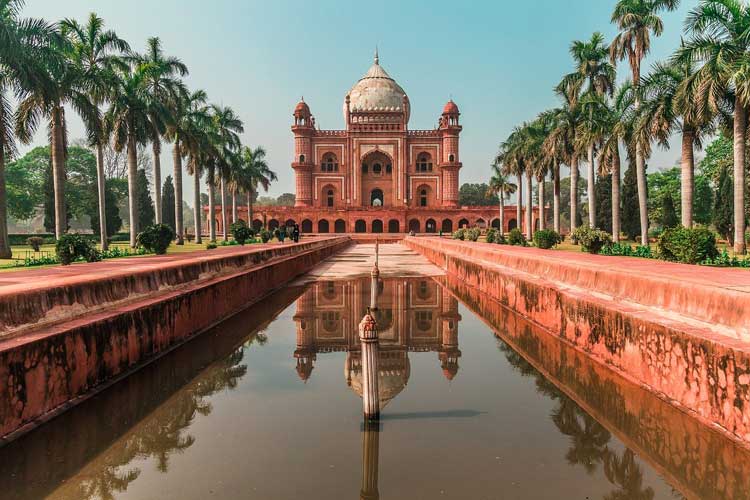
So great was Shah Jahan’s love for his third wife, Mumtaz Mahal, he built and dedicated Agra’s Taj Mahal to her. Semi-precious stones are embedded in the marble walls of this 17th century masterpiece. A reflective pool mirrors it. Except for its two tombs, this incredible structure is totally symmetrical.
Besides the Taj, Shah Jahan also built the Red Fort (Lil Qila) near Delhi. Two towers are capped with onion-shaped domes that have stick-like protrusions, representing upside-down lotuses. The domes sit alongside the Lahore Gate, which leads to Chhatta Chowk, a vaulted arcade. Once a mall selling regal goods, today vendors hawk souvenirs. We visit in the morning.
“Come in the afternoon and see millions of people roaming around,” says our guide, Paveen Paul.
Thanks to Paul, I leave Delhi, Varanasi, Jaipur and Pushkar with a much deeper understanding of India and its people.
Contrasts abound. Women dressed in vibrantly colored silk saris often walk barefoot amid squalor and mud in narrow dingy streets. And some streets are like zoos – they share pavement with bulls, goats, dogs and monkeys.
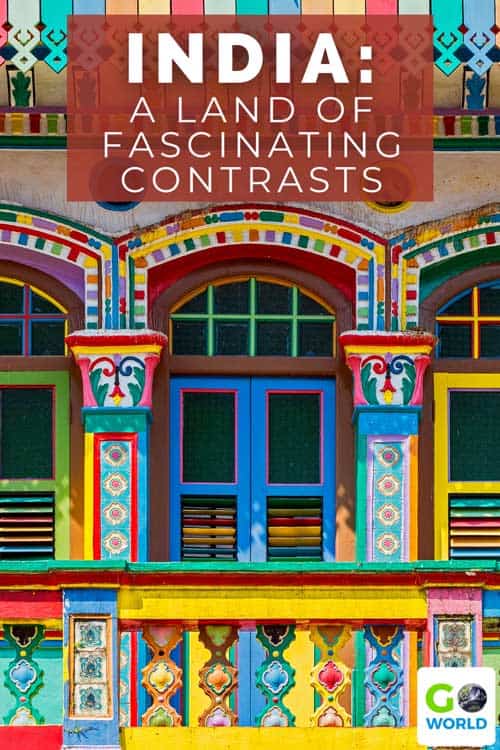
DELHI
Mughal architecture like the Red Fort began in the 16th century with Humayun’s Tomb. White marble and red sandstone became a hallmark, as did fountains and gardens.
Delhi also has stunning places of worship. Jama Masjid, India’s largest mosque, was Shah Jahan’s last creation. Striped marble domes and tapered minarets complement the marble and red stone building. The Baha’I House of Worship, surrounded by lovely gardens, resembles an enormous lotus just getting ready to bloom. It is the religion’s main temple.
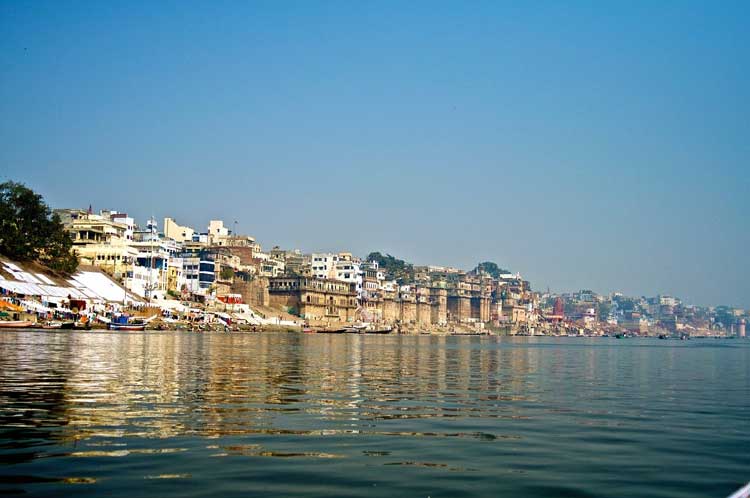
VARANANSI
Varanasi, India’s most pious city and said to be the world’s oldest continuously inhabited metropolis, hosts countless shrines, more than 700 temples and murderous traffic.
Beggars, pilgrims, the poor and everyone else congregates at the Ganges shoreline. Another contrast: The river may be spiritually pure, but it is a filthy body of water. Still, the very religious bathe in it.
Wandering down the riverfront ghats (stairs) for an early-morning boat ride, I see the faithful both performing morning rituals and doing their laundry. A bit farther down the river, smoke rises from the cremation pyres.
For a Hindu, being cremated is thought to give instant enlightenment. Still, it seems a big strange to see burnt human remains being tossed into the river. About six miles from Varanasi, Sarnath is believed to be where Buddha gave his first sermon after attaining enlightenment. A small museum displays Buddhist relics and Hindu ones.
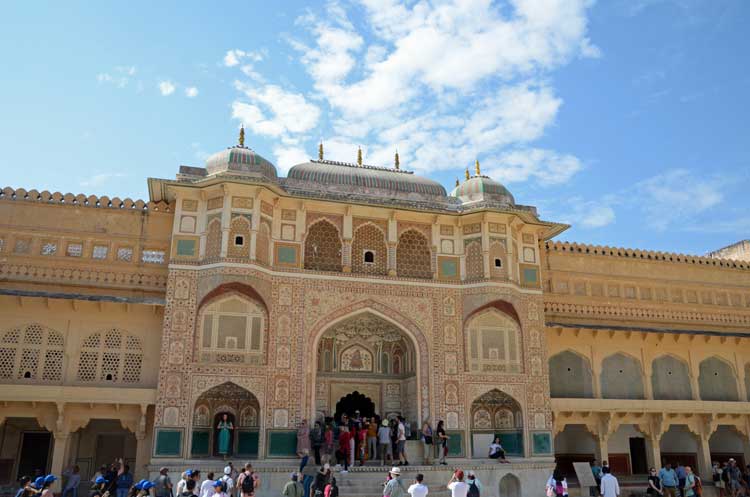
JAIPUR
To the west and a bit north are the rugged Avravli Hills that surround three sides of Jaipur. It got its nickname, “the pink city,” because buildings in the old part of the city are dark pink.
Five stories high, the odd Hawa Mahal or “Palace of the Winds” is but only one room deep. Royal household women remained unseen when they once peeked at the court. The Jal Mahal (Water Palace), another five-story building, sits on Man Sugar Lake. All but one story is submerged.
A steep incline leads to the huge, pinkish entrance of Amber Fort and Palace. Construction began in 1592 and took 125 years to complete. The panels of the Hall of Public Audience (Diwan-i-Am) have fine inlay work.
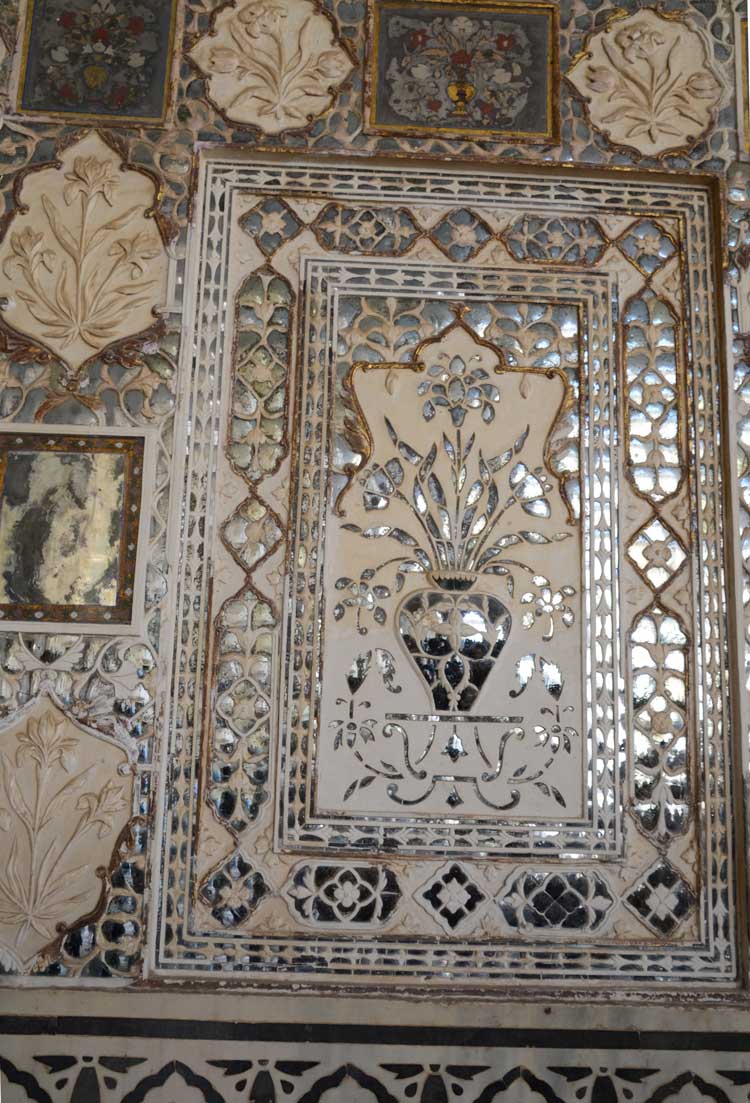
Check out the Ganesh Pol, an elephant-headed god. The Sheesh Mahal (Hall of Mirrors) has stunning inlaid mirrored patterns. One of the courtyards has elephant rides. Not my thing. But I do enjoy the views of the countryside.
Dinner with an Indian family is a nice respite from sightseeing. Our hosts, Inderviji Singh Rathmore and Usha Singh, are welcoming and loquacious. They share their family history, family pictures and give us a tour of the house plus answer my unending questions.
The next day we shop. We get the obligatory demonstrations about how patterns are transferred to silk with stencils and wood block molds. The carpet shop salesman serves us some rum (10:30 a.m.) to loosen up our wallets. Rolling out the carpets becomes fast and furious.
Later, there’s the gem shop visit. I have been through this drill so many times. I know I will become the salesman’s friend and get a very special price. Not!
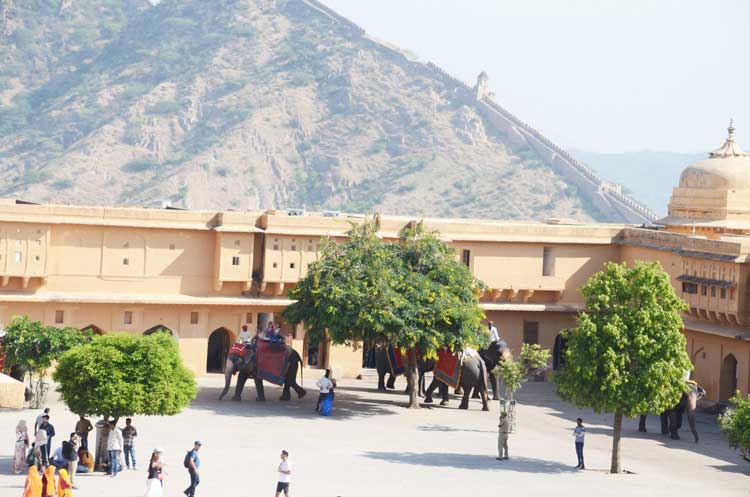
Puskar Fair in India
Puskar Fair is a big deal to Indians and thousands of horses, camels and cattle. Transport to the fair is a camel cart with no shock absorbers or seat belts. Boarding via an old metal card table chair contributes to this once-in-a-lifetime experience, which should not be done on a full stomach.
The camel finds every road rut. Soon the space between me and the road quickly minimalizes. I only have a thin pole on which to cling. Our camel driver starts laughing as he decides he wants to race another camel. My whole life appears before me. I pray. Finally, we arrive and happily de-cart by card table chair.
The fair, brimming with pushy vendors, cows and food, is crowded chaos. Villagers come here to sell their wares, watch camel races and barter for animals. Everything is for sale here, including clothes, shoes, tools, utensils and even a jeweled bikini.
It’s possible to sign up for camel herding lessons. Camel fashion-like nose pompoms and colorful hump decorations are big sellers. Be forewarned: there are many pickpockets and “friendly people “who surround you and then rob you.
Visiting India is a wonderful experience. I can hardly wait to return and see more.
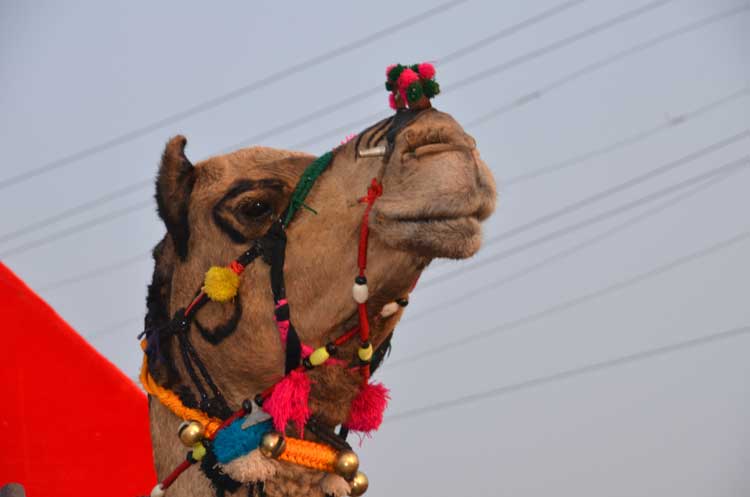
Book This Trip to India
Ready to explore the beauty of India? Check out Kiwi for your best non-stop flight deals and ground transportation bundles. Then be prepared with hotel or VRBO options, insight on local attractions and the best places to eat where ever you stay with Travelocity and TripAdvisor.
Find more activities, private tours and skip-the-line tickets with GetYourGuide. Book now for your adventure in India here and cancel anytime up to 24 hours before the event for a full refund.
For more information: Sita World Tours – www.sitatours.com
- The Low-Key Magic of Ghent, Belgium - April 22, 2024
- Discover the Hidden Charm of Extremadura in Spain - April 20, 2024
- Life of a Champion: Exploring the Muhammad Ali Center in Louisville - April 19, 2024
